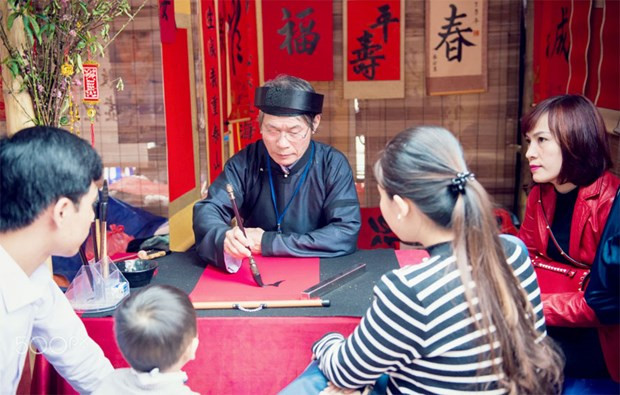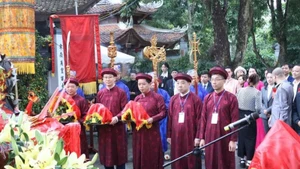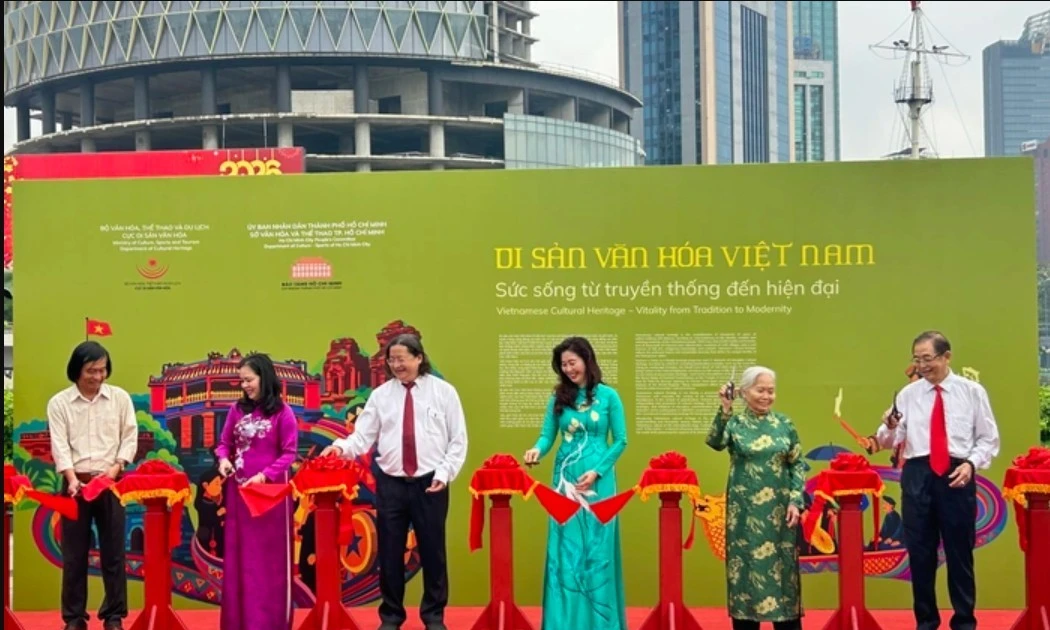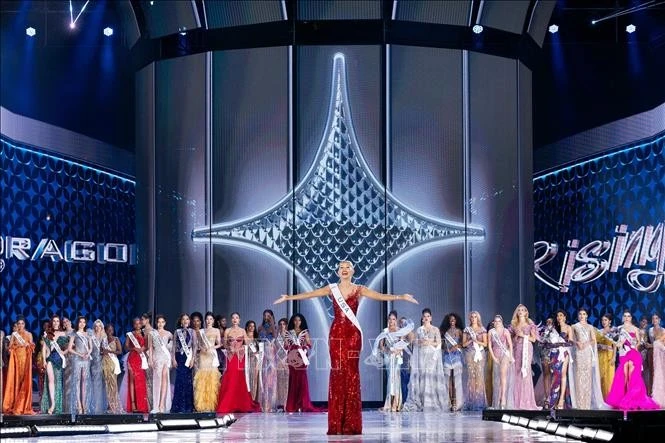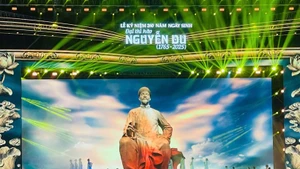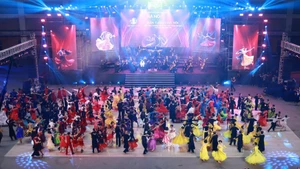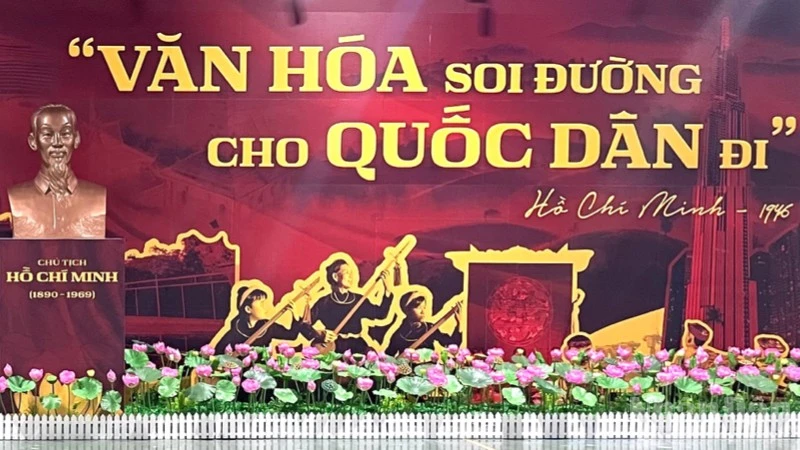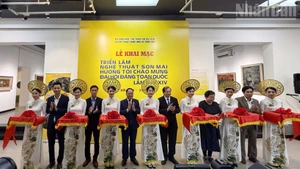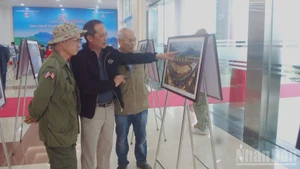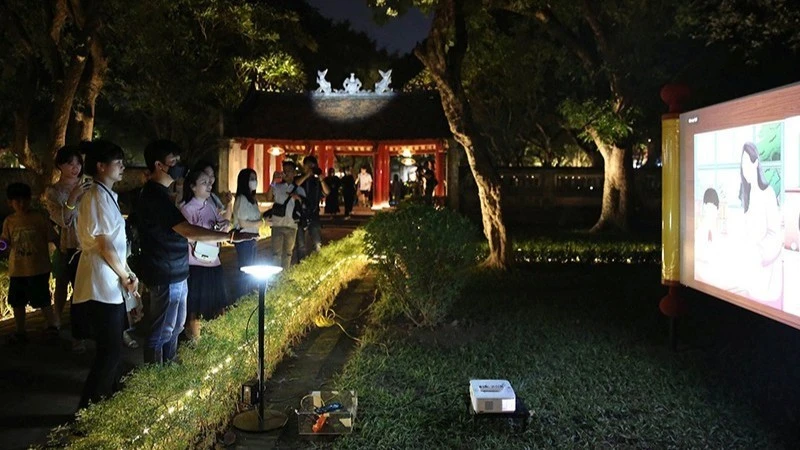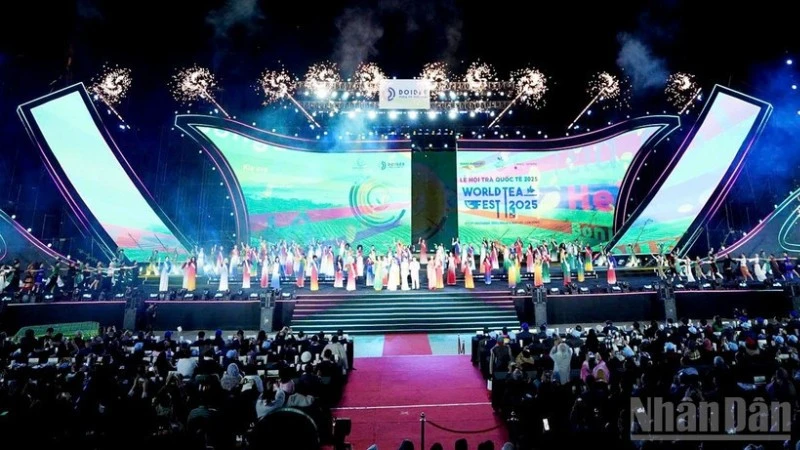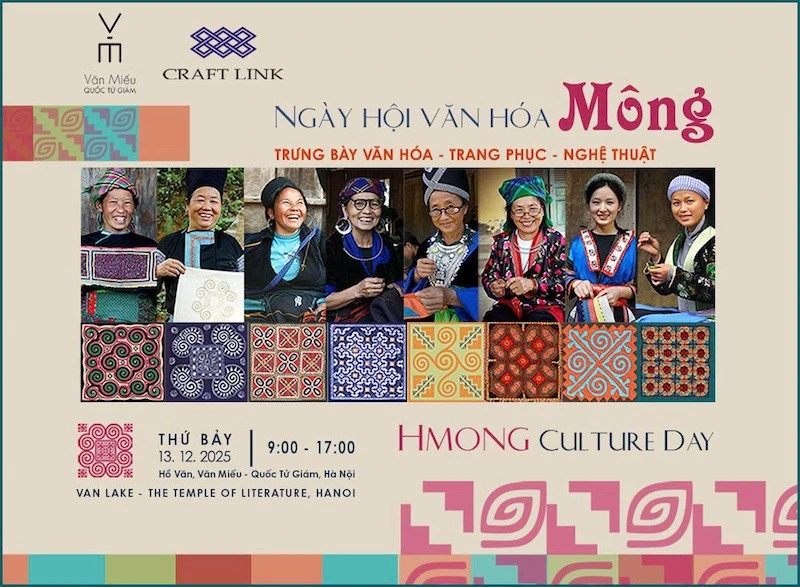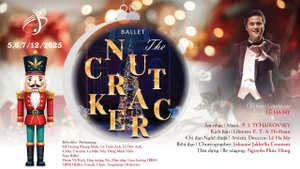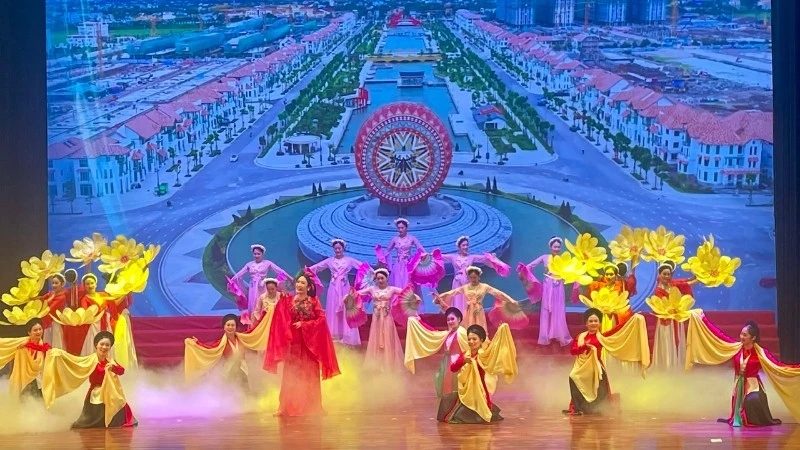Having a calligraphic work written on red paper to display during the Lunar New Year festival (Tet), Vietnam’s biggest traditional event, is a local tradition to pray for good things. The calligraphers write letters meaning prosperity, longevity and happiness.
This year’s festival will feature 50 calligraphers from clubs nationwide qualified by the organising board.
Visitors will also be treated to an exhibition of excellent calligraphic works, culinary delights, folk games, traditional music performances, water puppet shows, and activities to introduce handicrafts. Most of the events will take place at Van (Literature) Lake located within the complex.
Le Xuan Kieu, director of the Centre for Scientific and Cultural Activities of Van Mieu – Quoc Tu Giam, said preparations have been finished, ready to serve tourists in coming days.
Van Mieu-Quoc Tu Giam (Temple of Literature Complex) is one of the most popular relics and tourist destinations in the capital and the country at large. Built in the 11th century during the Ly Dynasty (1010 – 1225), it is also among the most important Confucian symbols in the country.
The complex consists of Van Mieu, a temple dedicated to Confucius as Confucianism used to be a popular religion in Vietnam in feudal times, and Quoc Tu Giam, the first national university of the country. It taught disciples on the Confucian way of life and revered Chu Van An, one of Vietnam’s most respected scholars. Between 1076 and 1779, Quoc Tu Giam educated thousands of talented men to serve their country to the best of their abilities.
